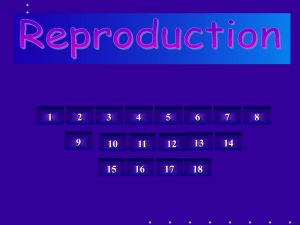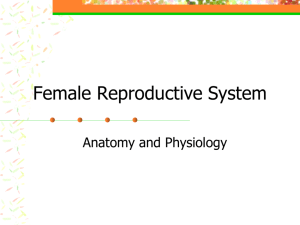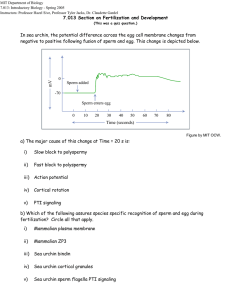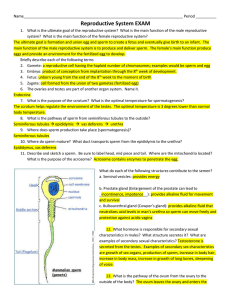Cycle of Life
advertisement
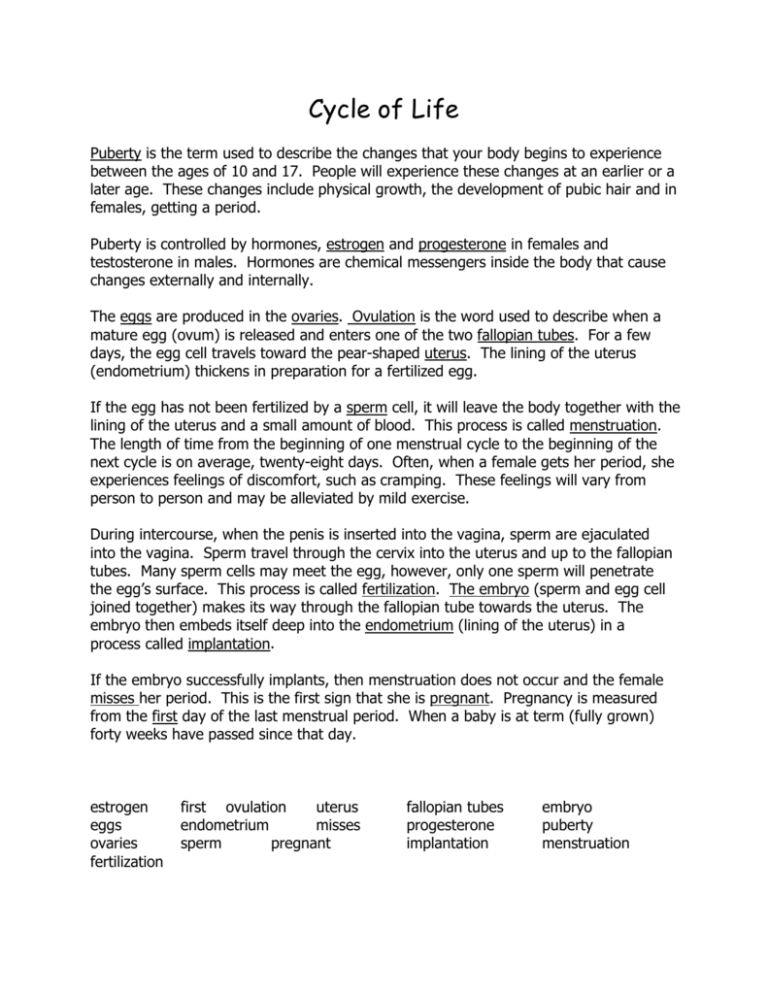
Cycle of Life Puberty is the term used to describe the changes that your body begins to experience between the ages of 10 and 17. People will experience these changes at an earlier or a later age. These changes include physical growth, the development of pubic hair and in females, getting a period. Puberty is controlled by hormones, estrogen and progesterone in females and testosterone in males. Hormones are chemical messengers inside the body that cause changes externally and internally. The eggs are produced in the ovaries. Ovulation is the word used to describe when a mature egg (ovum) is released and enters one of the two fallopian tubes. For a few days, the egg cell travels toward the pear-shaped uterus. The lining of the uterus (endometrium) thickens in preparation for a fertilized egg. If the egg has not been fertilized by a sperm cell, it will leave the body together with the lining of the uterus and a small amount of blood. This process is called menstruation. The length of time from the beginning of one menstrual cycle to the beginning of the next cycle is on average, twenty-eight days. Often, when a female gets her period, she experiences feelings of discomfort, such as cramping. These feelings will vary from person to person and may be alleviated by mild exercise. During intercourse, when the penis is inserted into the vagina, sperm are ejaculated into the vagina. Sperm travel through the cervix into the uterus and up to the fallopian tubes. Many sperm cells may meet the egg, however, only one sperm will penetrate the egg’s surface. This process is called fertilization. The embryo (sperm and egg cell joined together) makes its way through the fallopian tube towards the uterus. The embryo then embeds itself deep into the endometrium (lining of the uterus) in a process called implantation. If the embryo successfully implants, then menstruation does not occur and the female misses her period. This is the first sign that she is pregnant. Pregnancy is measured from the first day of the last menstrual period. When a baby is at term (fully grown) forty weeks have passed since that day. estrogen eggs ovaries fertilization first ovulation uterus endometrium misses sperm pregnant fallopian tubes progesterone implantation embryo puberty menstruation


